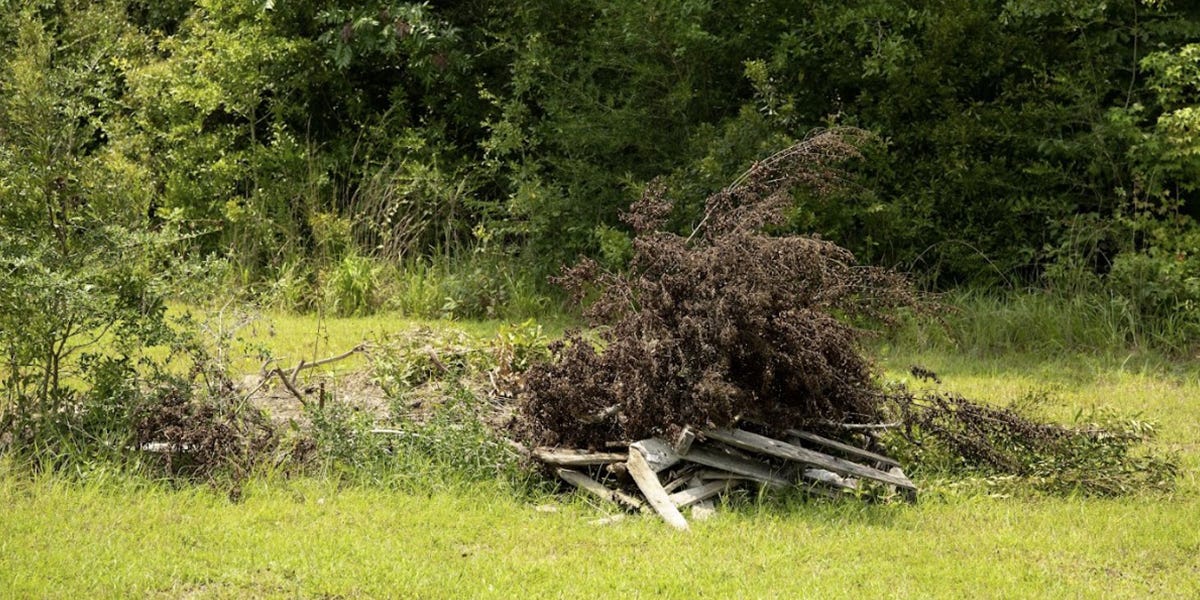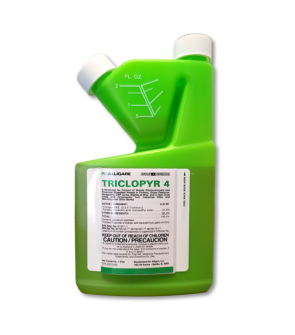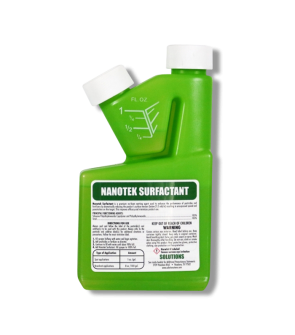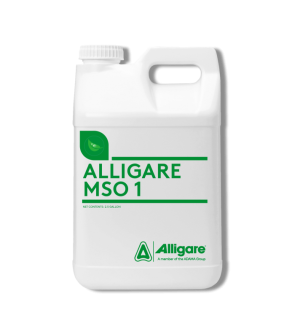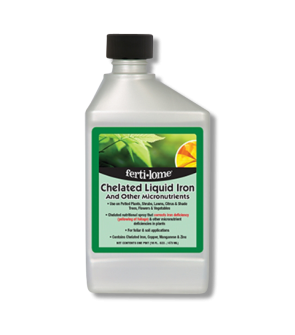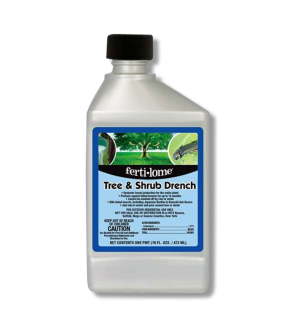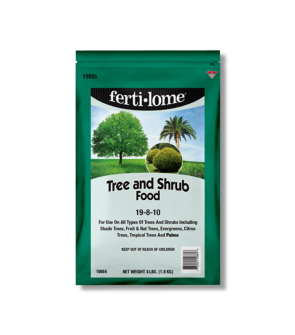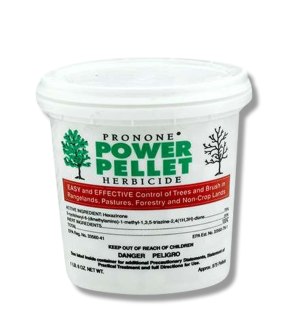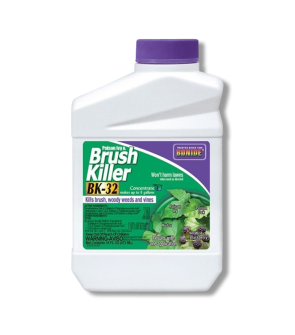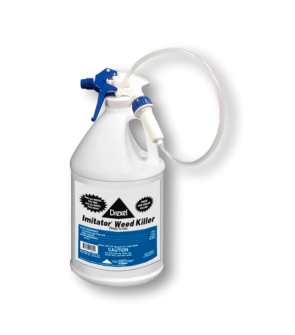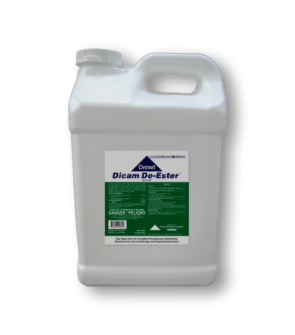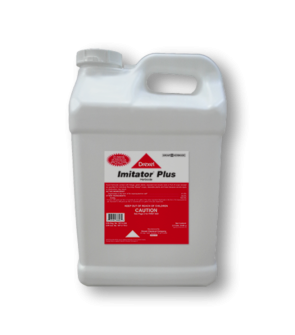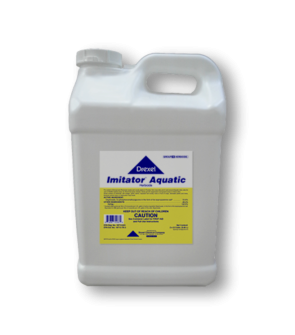Gain access to personalized product screening, the best pricing, rewards, and more!
Most Effective Products
Brush Control: How to Get Rid of Shrubs and Brush
This page is a general brush control guide. You can control any invasive brush species using the suggested products and methods. The brush weed category pages give additional information on the different species and specific treatment instructions and options. Follow these guides and use the recommended products, and we guarantee 100% control of all invasive brushes.
The term "brush" describes woody vegetation that tends to grow often in large bunches and interferes in areas that are not wanted. Woody brush and shrubs take valuable water from desired plants, reduce grass production, and can result in soil erosion. For homeowners and agricultural managers, thick stands of undesirable brush interfere with the look of a landscape and can reduce the productivity of grazing lands.
Many different brush types grow naturally around landscapes or could be introduced via seeds from other areas or intentionally planted on the property. The brush tends to grow in conditions that favor it. For example, if the soil is arid, brush grows more there. Also, other factors like rainfall and the physical characteristics of a region will determine whether brush will thrive there.
On agricultural lands, excessive brush can be an obstacle that sucks up resources. In residential areas, if brush is left to their own devices, it can grow out of control and mess with the aesthetics, which may lead to notices being sent by local organizations ordering you to trim down or remove the shrub because it's in violation.
Herbicides have been shown to manage brush on rangelands and other landscapes effectively. Our DIY brush removal guide will show you how to properly remove brush quickly and at an affordable price.
Identification
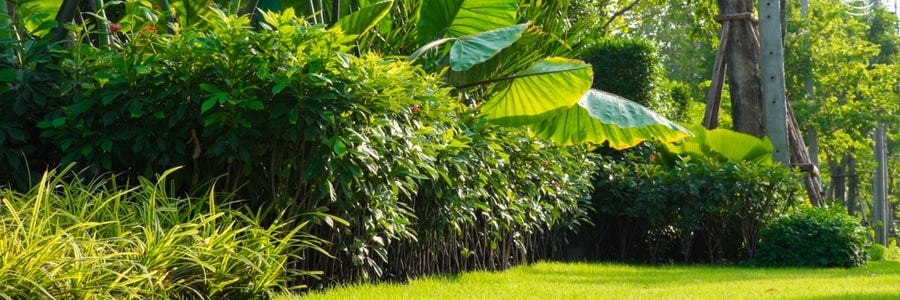
Start by identifying the brush species and evaluate the need for control. You may already be familiar with the brush type you have on your landscape. However, if you do not know, identification can be quite easy. The type of brush that grows on your landscape depends on what region of the country you are in, the climate and conditions, and what species are prevalent in the area. Some common invasive brushes include Kudzu, Japanese Honeysuckle, English Ivy, and purple loosestrife.
- The general characteristics of some brush species are narrow to wide lance-shaped leaves, and some species may have flowers or berries. Many brush species are at least 1 foot tall.
If you are unsure what brush you have, we recommend speaking to a local professional to identify your brush type. A professional can point you toward the best products to treat the brush.
Inspection
Once you have identified the brush you are dealing with, you can proceed with an inspection. Inspecting for a brush should not be too hard because you can't miss it when you have an unwanted brush on your property.
Where to Inspect
Inspect the brush to determine size and check the surrounding areas to see if chemical control is feasible. This will also help you determine which type of chemical control will work best for you (Cut-stump treatment, basal spray, foliar application, soil application, etc.).
What to Look For
Any woody-stemmed vegetation that has bark. A big part of the brush inspection process is determining the classification of the site you wish to treat. Most application sites are classified as either cropland or non-cropland.
Cropland is any land on which a crop is raised for harvest or grazing. Cropland includes pastures and rangelands.
Non-cropland is any land that is not used for agricultural purposes. Non-cropland areas include residential lawns, fence rows, storage areas, industrial sites, around farm buildings, utilities, drainage ditch banks, and right-of-ways such as pipelines, communications lines, electrical power lines, highways, and railroads.
Product use should always be conducted according to the label. Using the inspection findings, you can then move forward with a treatment approach.
Treatment
Once you have identified and inspected the target brush, you can conduct chemical herbicide treatments to address the brush. Before using any chemicals, ensure you are equipped with the necessary PPE (gloves, goggles, mask).
Our top recommendations for treating a broad spectrum of brushes are Triclopyr 4 and 2,4-D Amine. These herbicides have an established history of good results. Triclopyr 4 is our go-to for brush control because of its broad label, which makes it effective on a variety of woody, steamy plant vegetation, trees, and bark.
Step 1: Mix Selected Herbicide
Before using Triclopyr 4, you must calculate the square footage of the treatment area.
Find the square footage by measuring the treatment areas' length and width in feet, then multiplying them together (length X width = square footage).
For woody vegetation (bushes, shrubs, thickets, poison ivy, poison oak, etc.), we recommend 2 to 6 oz. of Triclopyr in a gallon of water per 1000 sq. ft.
For Triclopyr 4, sites that may be grazed, including rights-of-way, pasture, fence rows, and rangeland, cannot have more than 2 lbs. of product per acre per year. You cannot apply more than 2 lbs. of product per acre per year for foresty use sites.
For 2,4-D Amine, the mix rate breaks down to 0.72 to 1.1 fl. oz. per 1,000 sq. ft. when conducting small applications with a handheld sprayer. The exact amount will vary depending on the target pest. So, for example, if you have measured 3,000 sq. ft. of area to be treated, you will need to mix 6 to 12 oz. of Triclopyr 4 in 3 gallons of water.
Woody plants cannot exceed 8.25 pints of product per acre or more than 1 application per year. Use 2 to 3 quarts of product per acre for brush control in 30 to 100 gallons of water. For specific brushes, refer to the label's application rates.
Fill your sprayer with half the required amount of water, add the appropriate measured amount of product based on your calculations, and then fill it with the remaining half. Close the sprayer lid and shake well to agitate the solution, and you will be ready to spray.
Step 2: Choose Your Application Method
There are multiple ways to treat a brush for control. What you choose usually depends on the size of the brush.
- Foliage application: sprays applied to stem and actively growing foliage
- Bark spray: sprays prepared by mixing chemicals in kerosene, diesel oil, or bark penetrants and applied directly to the tree bark
- Cut stump: chemical applied to freshly cut stump surface to reduce resprouts
- Hack-n-Squirt: chemical applied with the corresponding ax cuts around the base of the brush plant;
- Soil application: sprays, granules, or pellets applied to the soil surface or injected into the subsoil.
- Each method has its benefits and drawbacks. For instance, cut stump and bark applications are easy but labor-intensive when there is a lot of brush.
For smaller brushes, it is most wise to spray foliar, while for larger vegetation, you may want to cut the stump and treat it. With a brush, you generally do foliar application and spray to the point of runoff. An adjuvant such as MSO seed oil or Nanotek Surfactant can help the product stick better to the foliage.
Step 3: Apply Product To Brush
Spray at the highest recommended concentration as indicated on your product label. This concentration may vary by species but is generally 1 to 2 percent when using a hand-held sprayer.
Apply the herbicide when the brush is in full leaf for the greatest coverage. Cover all the leaf area thoroughly. Symptoms of damage should be visible within seven to 14 days.
When applying herbicide to the base, cut the brush base down as close to the soil as possible to prevent resprouting and coat the stump's surface with the proper herbicide, such as Tordon.
Step 4: Follow-up
You may have to reapply in 7 to 14-day intervals 2 or more times to achieve complete control of the brush. The reason for this is to account for weather and chemical breakdown. Follow specific product applications found on labels.
Prevention
To keep brush off your property, you must monitor your turf and plants regularly and eliminate conducive conditions. Here are some preventative measures to take to ward off brush and keep it from coming back:
- Since brush develops normally along fence lines, we recommend using a soil sterilant or a pre-emergent product like Barricade as a preventative measure.
- Dig out the remaining trunks and roots and fill the holes with dirt.
- Trim down your plants and trees to minimize soil erosion by keeping roots intact. Regular thinning and pruning should be done while monitoring plants that may grow back.
Key Takeaways
What is Brush?
- A wide variety of woody brush can invade a landscape. Correctly identify the brush to learn which herbicides are labeled for its removal.
How to Get Rid of or Manage Brush
- Our top broad-spectrum recommendations for brush control are Triclopyr 4 and 2,4-D Amine Selective Weed Killer.
- Depending on the size of the brush and the amount of labor effort you are willing to put in, choose the best application method.
Preventing Brush Reestablishment
- Regular pruning and thinning of plants, cleaning up yard debris, and digging out trunks and roots of unwanted brush are good cultural brush control methods.
- You can also apply a pre-emergent, such as Barricade Herbicide or a soil sterile, to keep brush away from areas where it is not wanted.






